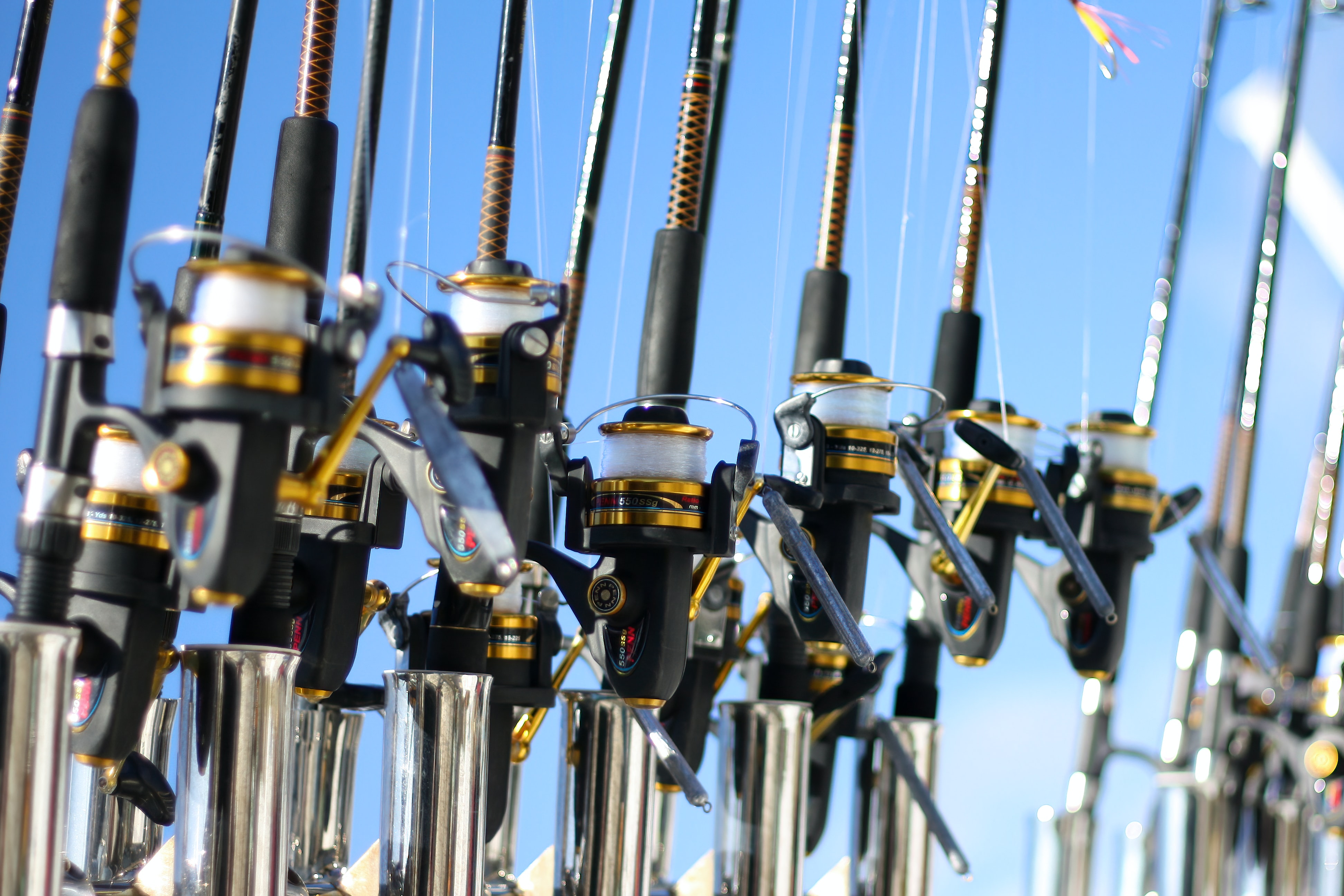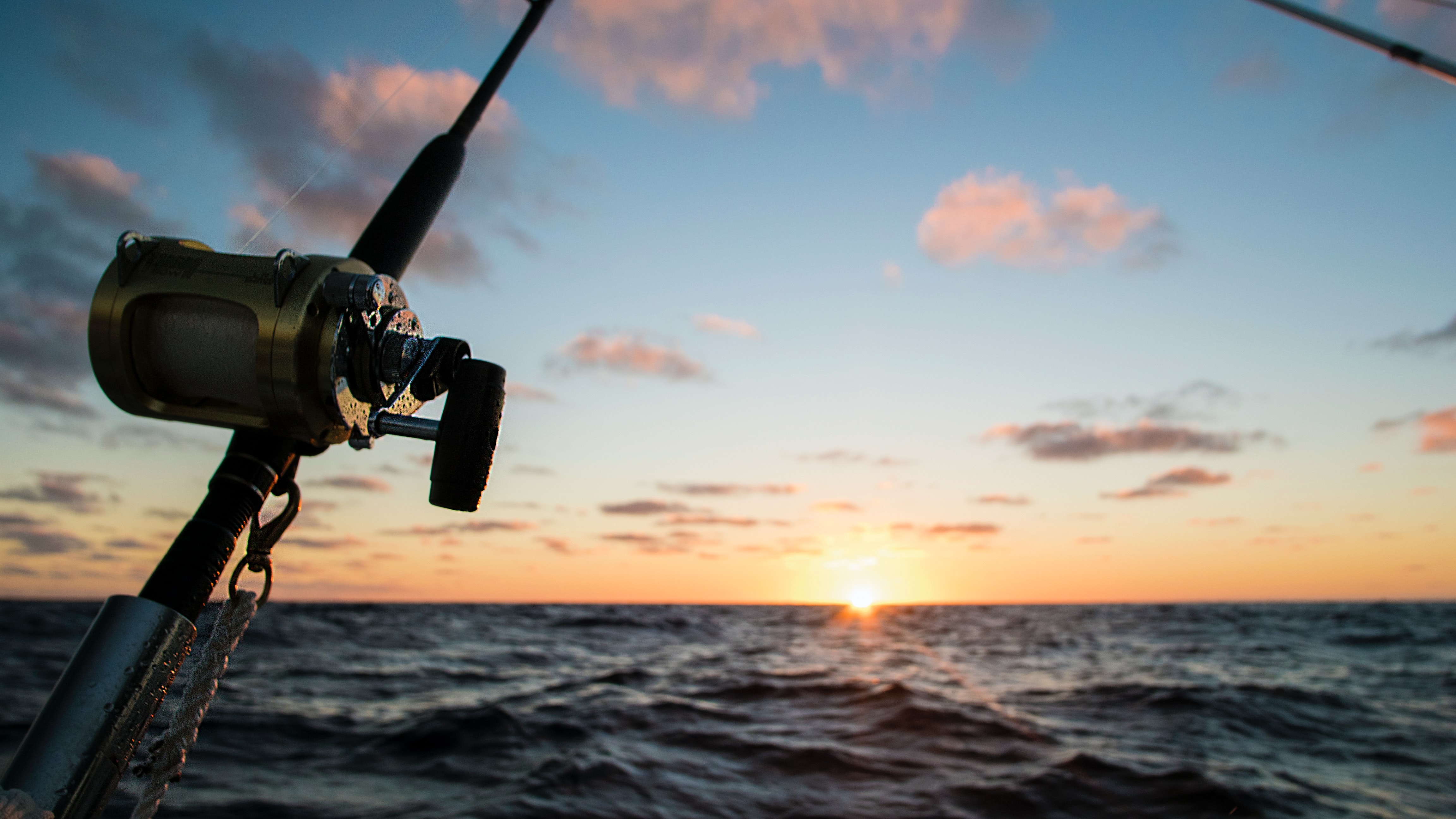Catching your own fish while sailing is a passion of many a sailor. Many of the most popular sailing destinations, such as the Bahamas and the British Virgin Islands are also great fishing destinations. Even more species can be found offshore.
Even if you aren't an experienced angler, you may have a lot of success with a little strategy. Here are ten tips to turn your yacht into a fishing sailboat.
1. Your gear should match your catch
You should decide which type of fish you’re targeting or will find at your destination. Make sure the gear matches your catch. For instance, if you’re into trout fishing, you should probably pick ultralight fishing rods (You can check the review here). While sailing, fish such as tuna and mahi-mahi can be caught with a reel, provided the line is strong enough.

2. Ask locals for tips
We have seen incredible fish caught offshore with very simple gear. One fisherman in St Martin recommended we simply cut up a yellow plastic bag so it became a lure, assuring us it would catch fish. Sure enough, the local fish were drawn to yellow and we caught a lovely tuna.
3. Use your winches as alarms
One technique worth trying is to put a few wraps of your fishing line around a winch drum. If the fish takes the hook, the winch will click, giving a great alarm to the fisherman to start reeling in.
 Image thanks Tor Johnson, Yachting World
Image thanks Tor Johnson, Yachting World
4. Know when to fish
You should go fishing at various times starting from the morning to the evening. In ambient sunshine, several species of fish bite best at dawn and dusk. Cloud cover during the midday hours can improve fishing, and in direct sunshine (especially during the summer heat), look for spots with shade. Fish tend to seek shade when it's hot and sunny and become more active during the cooler hours of the day.
It’s also always helpful to do some research about your targeted species and to check which time of the day they are most active.
5. Patience is a virtue 😇
Figuring out "where the fish are" is rarely as simple as placing a baited hook near a bunch of underwater weeds. Throughout the day, be prepared to switch lures, hooks, weights, knots, and even tactics.
You have to be willing to spend hours trying and switching gear and positions until you find that golden spot and learn the right tactic for the best results.

6. Learn rigging
Without a discussion of rigging, no list of beginning fishing tips would be complete. The importance of rigging can be attributed to two factors. First, when you set the hook, a strong, well-tied fishing knot will not break. Second, some knots will make your fly or lure swim like natural bait. But, only if you practice with the proper fishing knot for your lures. Rigging is, of course, only one element of the puzzle.
7. Double your chances
Two trolling lines should be used, one from each quadrant. Make the windward one is shorter than the leeward one to lessen the possibility of their tangling together ). The leeway on your boat will help keep them apart, especially if you clip the leeward one to a higher point like the backstay or (if you have one) the stern gantry.
8. Watch those sharp teeth & hooks
Sharks aren't the only ones with outstanding dental abilities. Barracuda have razor-sharp teeth, and wahoo have tiny but razor-sharp teeth that can cause significant injury; don't try to unhook a huge fish while it's leaping around the cockpit in an unruly manner. Wait for it to quiet down, then cover it with a dark moist towel if necessary. Another method for calming the fish is to set it on the cockpit sole, where its tail will not come into contact with anything. Always keep a sharp knife nearby in case you need to release yourself. You won't have time to search for one if that dangerous situation comes!
9. Use New Hooks
Always use brand new hooks or sharpen your existing ones. It may appear to be obvious logic, but thousands of people go fishing all day with old, rusty hooks. Will they be able to catch some fish? Maybe. However, there's no doubt they'd catch a lot more fish if they made sure every hook they used was as sharp as the day it was manufactured.
How To sharpen it? Here are some quick tips:
- Before each use, check the point and, if necessary, use a Hook File to clean it up.
- The file should be stroked against the curve of the hook rather than the point. Use the file to ensure that the two flats converge to form a razor edge and a sharp point. Try the following thumbnail test after a few strokes...
- Lightly drag the hook's point across your thumbnail. It's sharp if it digs in and leaves a white scratch. It isn't if it doesn't.
10. If you are fishing with a rod...
In a boat, reeling your fish into the top part (tip) of the rod may be far more difficult than on land. When reeling in your fish, leave at least a rod's worth of line out and pull the line itself out of the water to help land your catch easier. The extra line length prevents your rod from reacting to the flopping fish's movement as you remove the hook, which is especially useful when there isn't enough room to set the rod down.

Conclusion
Fishing needs patience, persistence and some research. Fishing from a sailing boat has its own tricks. This post covered ten of the most important tips to know before fishing while sailing. Now get out there sailor and catch me some fish!

